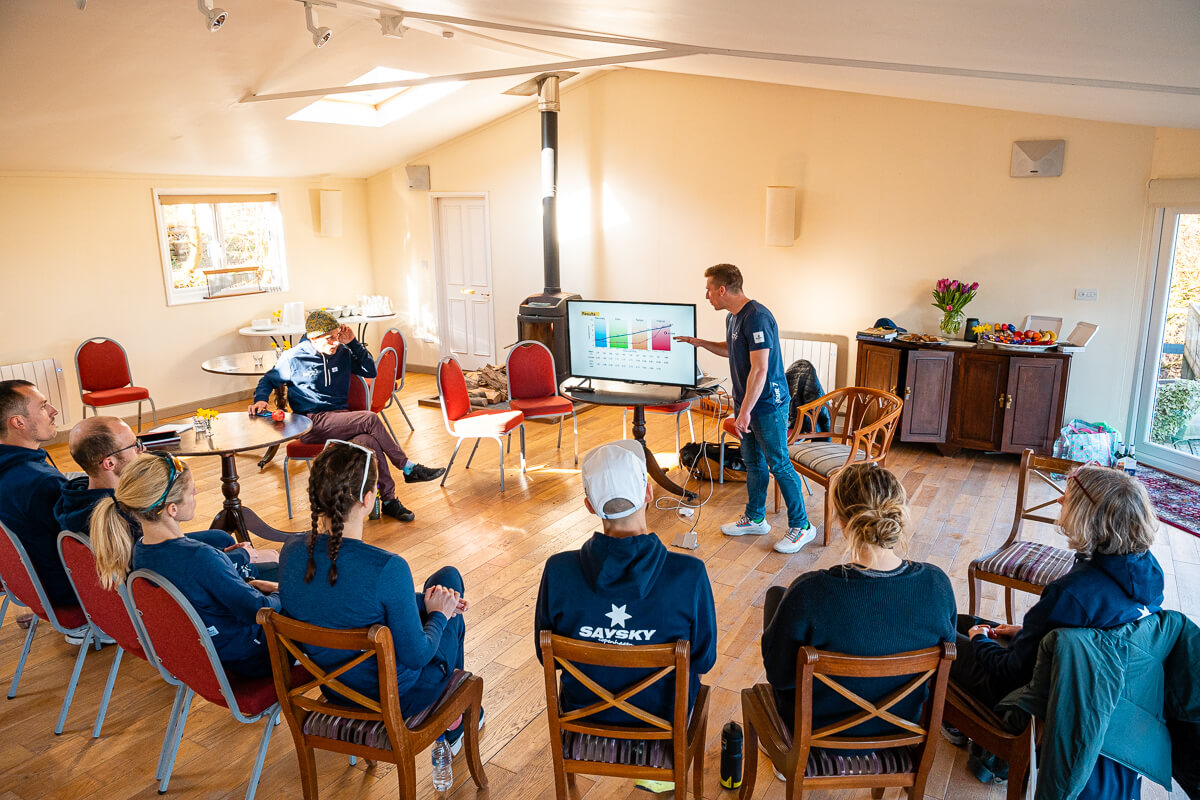An Hour 7 Knowledge Share
One minute summary
Gastrointestinal (GI) problems, such as diarrhoea or nausea, are the primary cause of drop outs in many ultramarathons. Also, athletes are becoming increasingly aware of the importance of fuelling in races, often trying to take on greater quantities of food than previously.
An athlete in our team regularly suffered from severe nausea in races while attempting to eat every 30 minutes for the duration of the race. The Hour7 team worked on several protocols to improve the situation, the main one being gut training.
By closely mimicking the planned nutrition of race day in key sessions and long runs, our athlete was able to compete in a 100-mile race and set an age-group world record without any stomach issues.
In conclusion, eating in training with the same regularity and volume as intended in a target race, was highly beneficial in reducing gut related issues in the target 100-mile race.
Overview
Our team principal, Michael Stocks, had a history of nausea and vomiting in 100 mile and 24-Hour events. He would normally be nauseous from around eight hours of running, adversely affecting the ability to take on fuel and, consequently, his performance.
He undertook a process of adaptation aimed at improving his ability to eat during competition. This included both a physiological and a psychological aspect.
After following the gut training process, he ran his goal 100-mile race, covering the distance in 13hrs 41mins. He ate a sports gel every 30 minutes during the race for a total of ~50g carbs per hour. In the last two hours, some mental effort was required to swallow the food. However, there was no sickness during the race and no material nausea. This represented a very significant improvement on previous events.
Gut Training
The benefits of gut training are scientifically well established. Hour 7 physiology adviser Dr Jamie Pugh of Liverpool John Moores University advises that, ‘the ability to train the gut in endurance athletes is becoming more and more well documented, but still remains overlooked by many athletes when attempting to ingest greater levels of carbohydrate in races. If we’re trying to improve performance over longer distances, even at the marathon, but especially in ultra-distance events, then ensuring adequate energy availability, without subsequent GI distress, is an excellent area to investigate’.
Hour 7 team manager Robbie Britton adds, ‘athletes often fuel significantly less in training than the amount they will use in their target race. When the gun goes it either becomes a physical or psychological challenge to take on board the necessary fuel. Quite often it is both.”

(Hour 7 team manager Robbie Britton and physiologist Dr Jamie Pugh in discussion with the athletes. Photo: Dave MacFarlane)
Gut Training Process
Athlete History
The athlete’s history of eating was to take on fuel sporadically during training. A 20-mile run might include just one gel, and a 50km as little as two or three. He would only occasionally eat while running outside of long runs, and sometimes consume one gel during a mid-week 15-mile effort.
This was very different to racing, where the athlete typically aimed to eat every 30 minutes during a 100-mile or 24-hour race. Therefore, the gut was asked to do much more during racing, which was over a longer time period and under emotional and performance stress, than it ever was in training.
Method
For 6 months before his target race, the athlete mimicked the eating regime he would be following in the race. This was managed by eating a sports gel (or occasionally other food) every 30 minutes during most runs of over an hour.
For example, on a three hour long run, he would eat five gels. Or on a run of 75 minutes, either one or two gels. Sometimes he would also consume one or two gels on runs of under an hour, especially if the session included harder efforts, either continuous or interval based.
Work from various academics, such as leading expert Asker Jeukendrup, has shown that in as little as two to three weeks we can see improvements in the gut’s ability to process carbohydrates with training.
Psychological
The history of nausea had created adverse feeling towards eating, which needed to be changed. A mindset shift proved helpful in encouraging consumption and a positive belief in the value of the plan. This included building on what had worked in the past. We will share the psychological elements in a separate note in the near future.
General Considerations
Period of gut training
A shorter period of gut training would likely achieve a similarly positive result. As mentioned above, studies have shown that even two or three weeks would likely be beneficial. In this case, the athlete opted for a longer period, and felt it provided a psychological benefit, regardless of any physiological outcomes. Gut training aside, team manager Robbie Britton also feels that that regular fuelling in higher stress training sessions improves overall training impact, through allowing greater volume, quality and consistency.
Cost
To the extent possible, using the same fuel in training as the athlete intends to consume in races, is optimal. However, the cost of sports products is often a concern. This can be mitigated by eating normal food or through a shorter gut training period.
Fat utilisation
One consideration is whether eating more during training would adversely affect fat utilization during exercise. In this instance, lab testing on the treadmill two weeks before his target race, the athlete showed high fat burning propensities, suggesting no material negative impact. The team will repeat the test in future to see if there is any change over time.
Conclusion
Eating in training with the same regularity and volume as intended in a target race, was highly beneficial in reducing gut related issues in the target 100-mile race.
References and Reading
Costa, R.J., Miall, A., Khoo, A., Rauch, C., Snipe, R., Camões-Costa, V. and Gibson, P., 2017. Gut- training: The impact of two weeks repetitive gut-challenge during exercise on gastrointestinal status, glucose availability, fuel kinetics, and running performance. Applied Physiology, Nutrition, and Metabolism, 42(5), pp.547-557.
Hoffman MD, Fogard K. Factors related to successful completion of a 161-km ultramarathon. Int. J. Sports Physiol. Perform. 2011; 6: 25–37.
Jeukendrup, A.E. and McLaughlin, J., 2011. Carbohydrate ingestion during exercise: effects on performance, training adaptations and trainability of the gut. Sports nutrition: More than just calories-triggers for adaptation, 69, pp.1-18.
Viribay, A., Arribalzaga, S., Mielgo-Ayuso, J., Castañeda-Babarro, A., Seco-Calvo, J. and Urdampilleta, A., 2020. Effects of 120 g/h of carbohydrates intake during a mountain marathon on exercise-induced muscle damage in elite runners. Nutrients, 12(5), p.1367.



